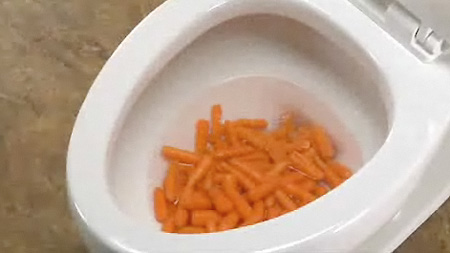Is it Practical to Dispose of Food Down the Toilet?
Is it Practical to Dispose of Food Down the Toilet?
Blog Article
What're your thoughts and feelings about Think Twice Before Flushing Food Down Your Toilet?

Intro
Many individuals are often faced with the problem of what to do with food waste, particularly when it involves leftovers or scraps. One usual question that occurs is whether it's alright to purge food down the toilet. In this article, we'll look into the reasons people might take into consideration flushing food, the effects of doing so, and alternative techniques for appropriate disposal.
Reasons that individuals may take into consideration flushing food
Lack of awareness
Some people may not understand the prospective injury caused by purging food down the commode. They might incorrectly believe that it's a harmless method.
Ease
Purging food down the commode may feel like a fast and simple option to getting rid of unwanted scraps, especially when there's no neighboring trash bin readily available.
Negligence
In some cases, individuals may just choose to flush food out of large laziness, without taking into consideration the repercussions of their activities.
Consequences of flushing food down the bathroom
Ecological influence
Food waste that winds up in rivers can contribute to contamination and injury marine environments. Additionally, the water utilized to flush food can stress water resources.
Pipes issues
Purging food can lead to blocked pipes and drains, creating costly pipes repair services and inconveniences.
Kinds of food that ought to not be flushed
Coarse foods
Foods with fibrous appearances such as celery or corn husks can obtain tangled in pipes and trigger clogs.
Starchy foods
Starchy foods like pasta and rice can take in water and swell, leading to clogs in pipes.
Oils and fats
Greasy foods like bacon or food preparation oils need to never be purged down the toilet as they can strengthen and trigger clogs.
Proper disposal methods for food waste
Utilizing a waste disposal unit
For homes outfitted with garbage disposals, food scraps can be ground up and purged via the pipes system. Nevertheless, not all foods appropriate for disposal in this fashion.
Recycling
Certain food product packaging products can be reused, reducing waste and lessening ecological effect.
Composting
Composting is an environment-friendly means to throw away food waste. Organic products can be composted and made use of to enhance dirt for horticulture.
The relevance of correct waste monitoring
Minimizing environmental harm
Correct waste administration practices, such as composting and recycling, aid lessen pollution and maintain natural resources for future generations.
Protecting plumbing systems
By staying clear of the practice of flushing food down the bathroom, homeowners can protect against costly plumbing fixings and maintain the integrity of their pipes systems.
Verdict
To conclude, while it may be appealing to purge food down the commode for convenience, it's important to understand the potential consequences of this activity. By taking on appropriate waste administration techniques and taking care of food waste sensibly, people can add to much healthier plumbing systems and a cleaner setting for all.
FLUSH FOOD DOWN THE TOILET?
FLUSHING FOOD CAN CAUSE BLOCKED DRAINS IN YOUR HOME
All of the plumbing fixtures in your home are connected to the same sewer pipe outside of your home. This outdoor sewer pipe is responsible for transporting all the wastewater from your home to the Council sewer mains. Even small pieces of food that go down the kitchen sink can cause problems for your sewer. It should therefore be obvious that flushing larger bits of food, such as meat, risks a clog in either the toilet itself or the sewer pipes. Flushing greasy food is even more problematic because oil coagulates when it cools, coating the interior lining of your pipes.
THE TOILET IS NOT A BIN
Food isn’t the only thing that people shouldn’t be flushing down the toilet. People use the toilet to dispose of all kinds of things such as tampons, makeup wipes, dental floss, kitty litter and even underwear. Water goes to great lengths to educate residents about the high costs and stress placed on wastewater treatment systems simply from people flushing the wrong stuff down the toilet. It costs taxpayers millions of dollars each year, and homeowners thousands in blocked drain repairs.
FLUSHING FOOD IS A WASTE OF WATER
Flushing food is a waste of our most precious resource - water. In June this year Level 1 water restrictions were introduced to protect water supply from drought conditions. Much of New South Wales continues to be affected by prolonged drought with recent figures revealing up to 97 per cent of the state remains in drought. Depending on whether you have a single or dual flush toilet, every single flush uses between five and 11 litres of water. In the current climate this is a huge amount of water to be wasting on flushing food that should be placed in the bin (or better yet, the compost).
https://www.jabplumbingsolutions.com.au/blog/can-you-flush-food-down-the-toilet

I was brought to that report about Is it safe to flush food (especially rice) down the toilet? through an associate on our other blog. Be sure to set aside a second to share this post if you enjoyed it. Thank you for being here. Kindly check up our website back soon.
Call Us Today Report this page